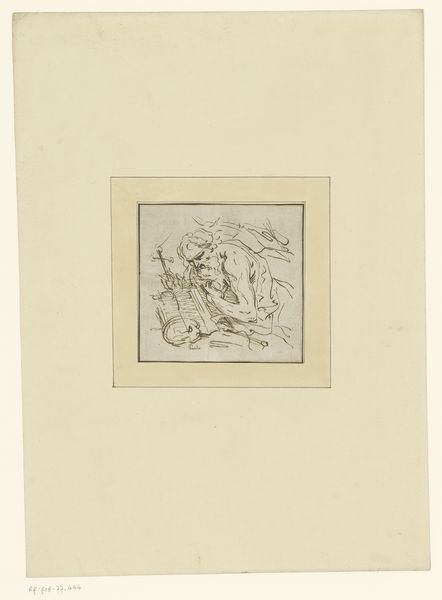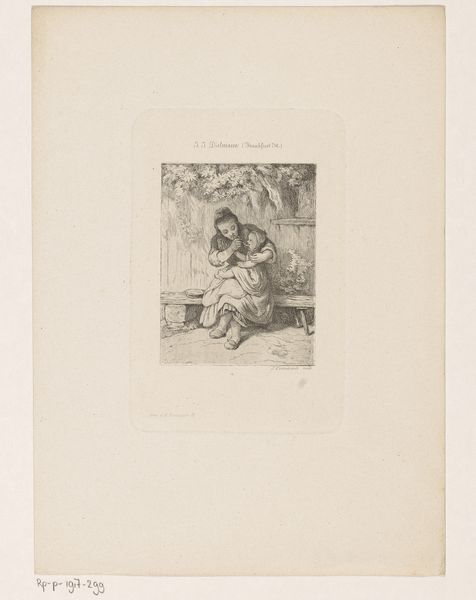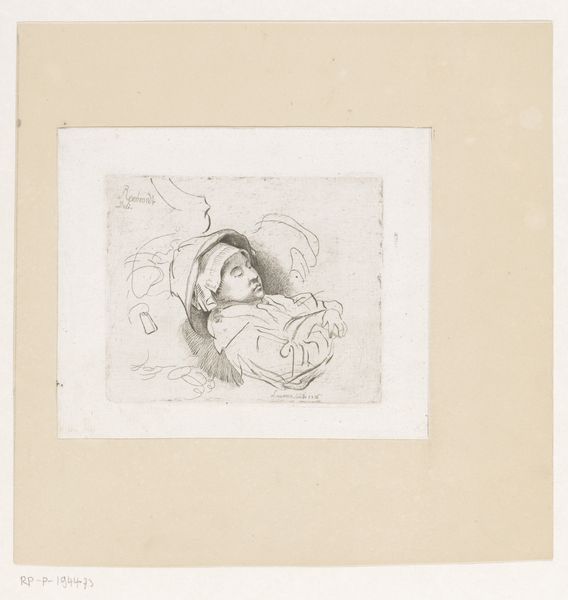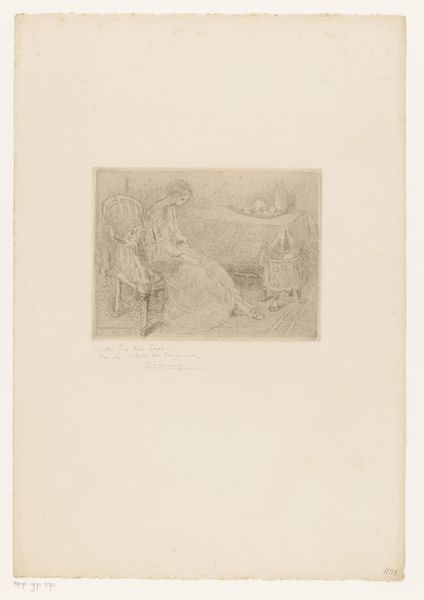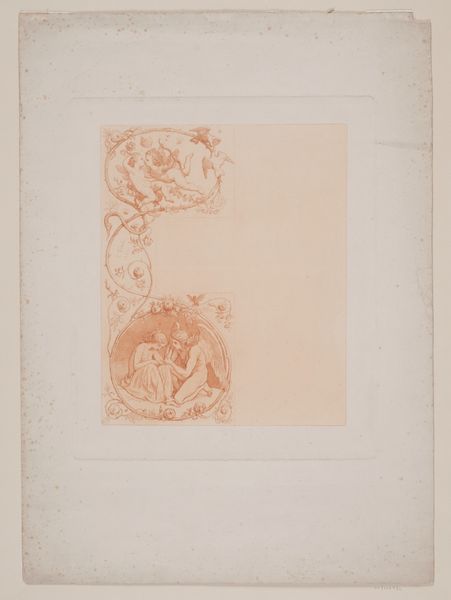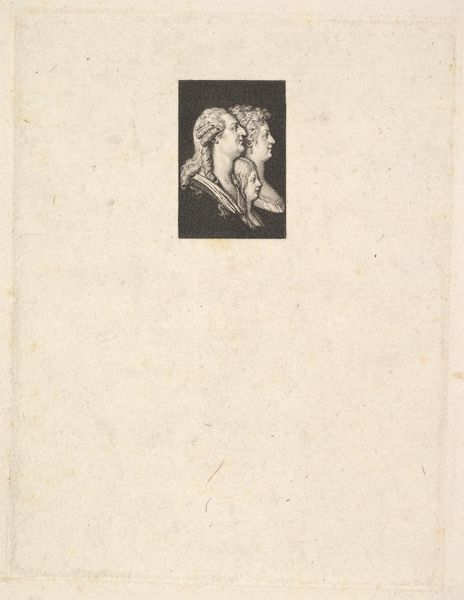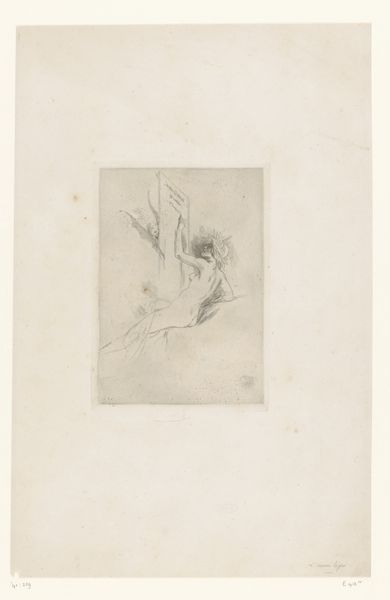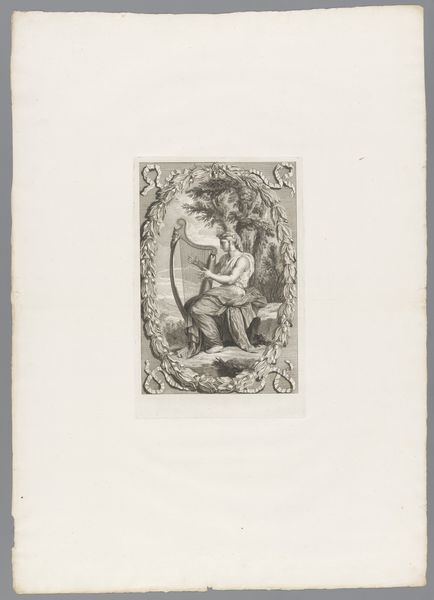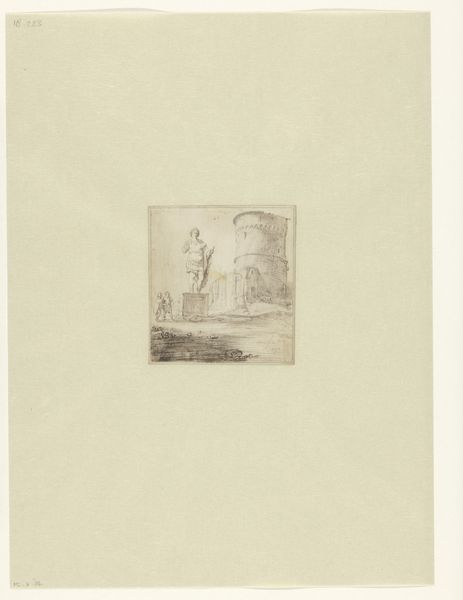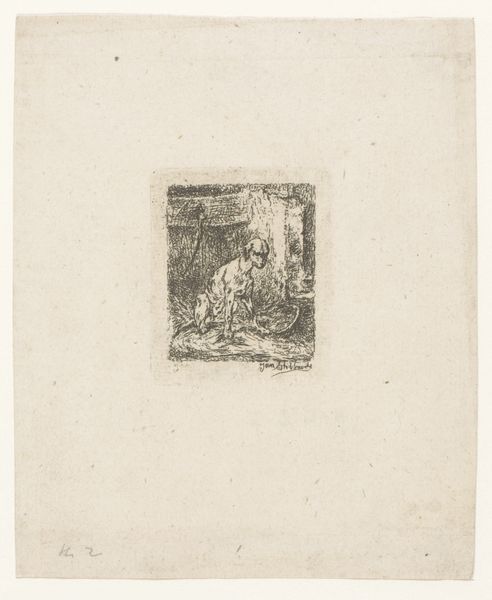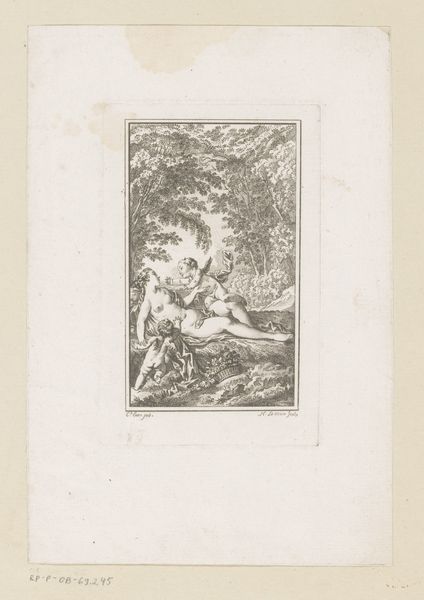
drawing, print, paper, ink, pen
#
portrait
#
drawing
#
neoclassicism
# print
#
figuration
#
paper
#
ink
#
pen
#
academic-art
Dimensions: 95 × 88 mm
Copyright: Public Domain
Editor: Here we have Samuel Shelley's "Seated Cupid," created between 1776 and 1808, rendered in pen and ink on paper. I'm struck by the contrast between the delicacy of the linework and the robust, almost chubby figure of Cupid himself. What do you see in this piece? Curator: It's fascinating to observe the artist’s construction of form through line alone. Notice how Shelley doesn't rely on shading to create volume. Instead, he uses hatching and cross-hatching, especially around the Cupid's torso and legs, to suggest three-dimensionality. Consider the formal structure; how would you describe the composition? Editor: Well, it’s quite simple, really. Cupid is centered, enclosed within what looks like a square frame within an oval. There’s a real economy of line, with a lot of empty space around the figure. Curator: Precisely. That economy emphasizes the inherent qualities of the lines themselves. Are they gestural or precise? Think about the distinction between an academic study and a more expressive sketch. The seeming "emptiness" isolates the figure, directing our focus to Shelley's technique. Note also the use of the framing square, contrasting with the sketchier, suggestive lines outside that frame. Does that have significance? Editor: Possibly. It makes me think the artist was trying to formalize an informal pose, turning an everyday moment into something…classical, maybe? I noticed too that some lines continue beyond the square or are incomplete; the lower left, for example. Curator: Excellent observation. The unfinished quality invites us to consider the artistic process, emphasizing the work as an idea, a study rather than a finished pronouncement. Do you find any structural connections to other Neoclassical works you may be familiar with? Editor: It reminds me a little of Flaxman’s outline drawings, particularly in the reduction to essential lines and forms, focusing on conveying shape, weight, and the idealized form of the body. Curator: A perfect comparison! Thinking about it formally has really unlocked the drawing's essence, revealing its intentional simplicity and technical sophistication. Editor: Yes, I see the formalist qualities in this so clearly now; this drawing feels both intimate and timeless, capturing both the mythological Cupid and the technique used in its making.
Comments
No comments
Be the first to comment and join the conversation on the ultimate creative platform.
